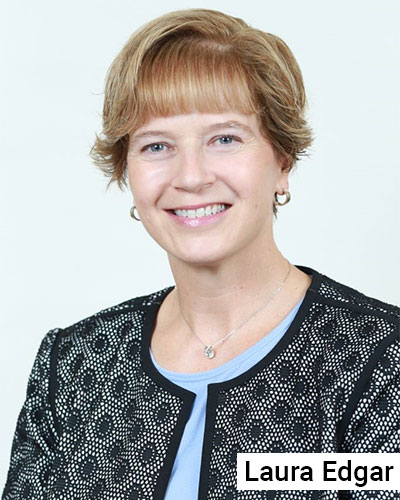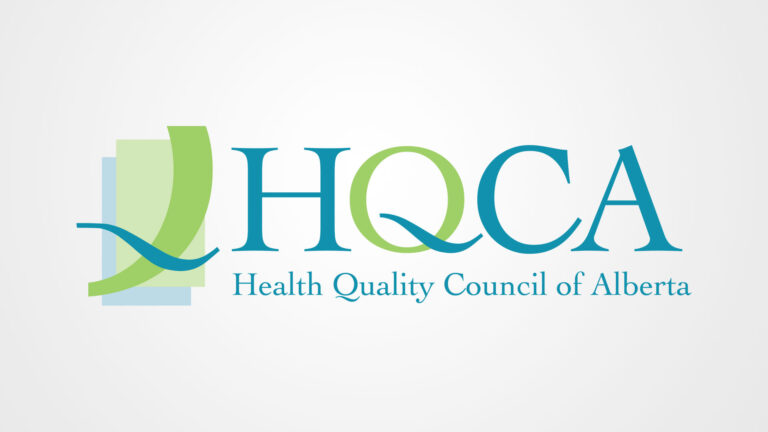
The Alberta College of Pharmacy (ACP) governs pharmacists, pharmacy technicians, and pharmacies in Alberta.
So, who oversees ACP?
The leadership and oversight of ACP is the responsibility of Council, which is comprised of seven regulated members elected by their peers (five pharmacists and two pharmacy technicians) and seven public members appointed by the Minister of Health.
How does Council govern ACP?

Laura Edgar, Vice President, Board and Organizational Governance at the Institute on Governance (IOG), explained that Council’s governance role includes four main areas of responsibility: compliance, oversight, strategy, and leadership. Laura leads IOG’s work on board and organizational governance, and she has extensive expertise in the governance of public-purpose organizations like ACP. She has previously worked with ACP to support Council with strategic planning.
Compliance
The first of these four responsibilities, compliance, involves ensuring alignment with a legal framework.
ACP’s legal framework is set by the province; the Health Professions Act establishes the structure and responsibilities of ACP. The Act requires all health profession regulators, including ACP, to be governed by a council. The Act also requires regulators like ACP to establish and enforce standards of practice and provide direction to the profession (among other responsibilities) to protect and serve the public.
“Government has set a public protection mandate and as a result, public protection has to be front and centre for everything the college does,” Laura explained.
Based on this mandate, ACP established its mission to guide the college’s work, as follows: “The Alberta College of Pharmacy governs pharmacists, pharmacy technicians, and pharmacies in Alberta to serve, support, and protect the public’s health and well-being.”
Oversight
Council’s second responsibility is to oversee the work of the organization and make sure it is functioning as it should.
“This does not mean getting into the details of operations,” said Laura. “It does mean overseeing and directing the work of the registrar, and, through reporting and other means, ensuring that the organization is operating effectively and delivering on its mandate.”
ACP’s Council meets several times throughout the year to fulfill their oversight role and ensure ACP is working effectively. Reports are regularly received by Council to demonstrate compliance with its governing policies. External audits of financial records are a means of demonstrating financial responsibility, and annual reports are a means of demonstrating to the Minister of Health (as a representative for Albertans) about how the college has fulfilled its responsibilities.
Strategic direction
Council’s third responsibility, providing ACP with strategic direction, means looking towards the future.
“Organizations are not static, so Council always needs to look forward to consider how they can do better,” said Laura.
Richard (Rick) Hackman served three terms on ACP’s Council. He was first elected as a Council member with the former Alberta Pharmaceutical Association in 1992, and then returned in 2012 to serve an additional two terms with ACP. Rick served as a member of Council and as President in both cases. Although he is no longer serving on Council, Rick continues to serve on ACP committees. As an experienced leader and member of Council, Rick elaborated on Council’s process to set their strategic direction.
“Council has to continually monitor the horizon, keeping an eye on the healthcare, societal, and political landscapes to have a good idea of what may be coming,” said Rick. “With the commitment to long-standing, true north principles, this foresight allows Council to identify trends, challenges, and opportunities. This enables Council to set (or reset) direction in terms of operational or professional priorities.”
Through this process, Council identifies opportunities or problems and develops solutions that fit within its mandate.
Leadership
Council’s fourth responsibility is to provide leadership for the organization. This includes ensuring the organization has sound relationships with interested parties and working to address the complex questions facing the organization as it delivers on its mandate.
“Leadership involves creative, generative processes to think through a complex problem or challenge and consider what the organization’s role and options are in addressing the challenge,” said Laura. “There are generally no simple answers to these ‘big’ problems, but it is Council’s role to think about these bigger questions that are facing the profession in the interest of the public.”
Laura compared the process to untangling a complex knot.
“With these complex problems, there are a number of different but inter-related issues intertwined into a knot; Council needs to determine what happens if a thread is pulled – will the knot start to unravel, or will it get tighter?”
For Rick, these complex problems made him interested in getting involved with Council.
“Both times I ran for Council, we were on the cusp of a real paradigm shift within the profession,” said Rick. “It was clear to me that I was either going to be led by change or I was going to be able to participate in leading change – that’s what prompted me to get involved.”
Rick recalled one such problem that required long-term effort and careful deliberation for Council during his second tenure. The problem was a lack of clarity in compounding rules and requirements and a need for ACP to establish standards. This conversation was instigated, in part, by real life tragedy.
In 2012, 753 people were infected and 64 people died as a result of a multistate outbreak of fungal meningitis in the United States.[1] This outbreak was traced back to steroid injections from the New England Compounding Center in Massachusetts. Shortly afterwards, more than 1,200 cancer patients in Ontario and New Brunswick received chemotherapy solutions with concentrations below labelled specifications.[2] Both incidents were caused by unsafe compounding practices.
“Those types of incidents spark conversations within government and the public,” said Rick. “The college was tasked with determining what our responsibility was in terms of guiding our profession to protect the public to make our practices better, safer, more trustworthy, and stronger.”
In this case, compounding was the knot. A few of the threads included looking at what was being done elsewhere, consulting interested parties, and considering implications for pharmacy practice in Alberta. Unravelling the knot involved pulling all of these threads and more.
The first step was to look at what was being done already. The National Association of Pharmacy Regulatory Authorities (NAPRA) developed model compounding standards. From there, each provincial pharmacy regulatory body was responsible for adopting or adapting the standards and then implementing them. ACP had to consider how these standards would fit to protect patients within Alberta’s healthcare landscape.
“ACP’s Council reviewed each of NAPRA’s standards word by word in terms of what it meant to practices in Alberta including implementation, access, and how the public would be affected,” said Rick.
From there, Council initiated consultation with regulated members, the public, and other interested parties. Rick explained that Council only makes important decisions about approving or amending standards after extensive consultation.
“Consultations with regulated members, interested parties, and where appropriate, with the public, profoundly affect the shaping of the final product,” said Rick. “Council does not make these types of decisions without a lot of consultation on many levels.”
The end result of this comprehensive process was Council approving two sets of standards: the Standards for Compounding Sterile Non-Hazardous and Hazardous Preparations (approved in 2016 as NAPRA’s model standards) and the Standards for Pharmacy Compounding of Non-sterile Preparations (approved in 2018). The duration of this process speaks to the complexity of this problem; developing compounding standards to keep Albertans safe proved to be a tough knot to untangle.
Rick emphasized that the entire process, from drafting to consultation to implementation, all linked back to ACP’s mission.
“As with every endeavour to enact or revise standards, we wanted these to be rigorous, implementable, sustainable, and at the end of the day, we wanted pharmacy care to be enhanced, as this was in the public’s interest, and important to their safety,” said Rick.
Why it matters
Tragedies like the New England Compounding Center incident underscore the importance of ACP’s mission to protect Albertans’ health and well-being. The implementation of ACP’s compounding standards is one example of how Council helps to make pharmacy practice safer in Alberta.
“Patients need to have confidence that when they step up to the pharmacy counter, they will receive services from a professional who will give them the best possible care that they can trust to be consistent with professional standards and ACP’s Code of Ethics,” said Rick. “Council is always looking ahead and adapting to the changing healthcare environment and needs of Albertans.”
Council’s governance role supports progress and innovation within the profession, maintenance of a high standard of care, and the protection of Albertans when they visit their local pharmacy.
[1] Centers for Disease Control and Prevention. Multistate Outbreak of Fungal Meningitis and Other Infections. Retrieved from https://www.cdc.gov/hai/outbreaks/meningitis.html
[2] National Library of Medicine. (2013). Distribution of diluted chemo drugs leads to new oversight in Ontario. Retrieved from https://www.ncbi.nlm.nih.gov/pmc/articles/PMC3734921/




